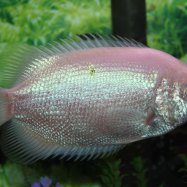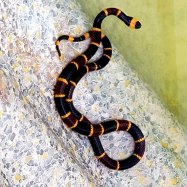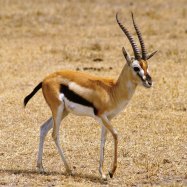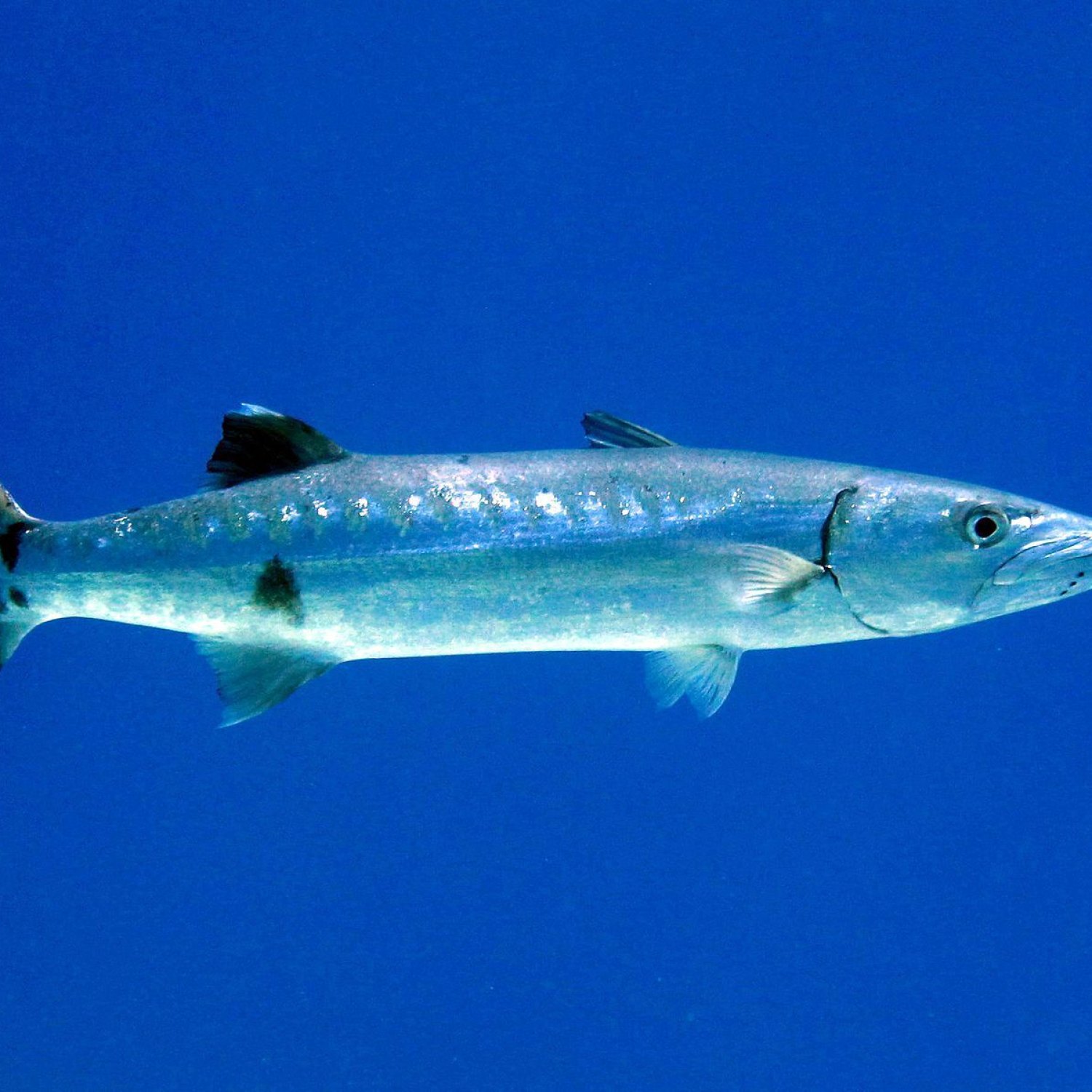
Barracuda
0.5 to 2 meters (1.6 to 6.6 feet)
Barracudas are fierce predators found in the coral reefs, mangroves, and coastal waters. Ranging from 0.5 to 2 meters in length, they are often characterized by their long and torpedo-shaped bodies. As a member of the Sphyraenidae family, these fish are known for their sharp teeth and lightning-fast speed, making them an exciting sight to encounter in the wild. Keep your eyes peeled for these powerful creatures on your next underwater adventure!
Animal Details Summary:
Common Name: Barracuda
Kingdom: Animalia
Habitat: Marine
The Fascinating World of the Barracuda
Nestled in the warm and temperate waters of the world's tropical and subtropical oceans, lies one of the ocean's most iconic and skilled predators – the barracuda. This fierce and powerful fish roams the seas with its sleek and elongated body, instilling both awe and fear in all who lay eyes upon it. With a scientific name of Sphyraena barracuda, this marine marvel is simply known as the barracuda.The barracuda belongs to the animal kingdom, specifically in the phylum Chordata, class Actinopterygii, and order Perciformes Barracuda. Its family is called Sphyraenidae, and it can be found in various locations including coral reefs, mangroves, and coastal waters. Its habitat is primarily marine, and it is a carnivorous species with a unique feeding method. In this article, we will dive deep into the fascinating world of the barracuda and explore its various features that make it such a stunning and formidable animal.
The Appearance and Coloration of the Barracuda
The barracuda is considered elongated and torpedo-shaped, ranging from 0.5 to 2 meters in length (1.6 to 6.6 feet). It has a slender and streamlined body, ideal for quick and agile movement in the water. Its head is large and pointed, with powerful jaws filled with razor-sharp teeth, making it a formidable predator Belgian Tervuren.One of the most striking features of the barracuda is its silvery and shimmering scales, which give it a stunning appearance. Depending on the species, barracudas can also have a greenish or grayish coloration. Their coloration serves as excellent camouflage in the water, making it easier for them to hunt their prey.
The Habitat and Distribution of the Barracuda
The barracuda is a highly adaptable fish, able to thrive in a variety of habitats within the tropical and subtropical oceans of the world. They can be found in the Caribbean, Red Sea, Mediterranean, and Pacific Ocean, among others. Their geographical distribution is widespread, with varying locations depending on the species.In terms of habitat, barracudas are known to prefer areas with plenty of hiding spots, such as coral reefs, mangroves, and coastal waters. These locations provide the perfect environment for them to thrive and hunt for their prey. Their excellent adaptation skills make them a dominant predator in their ecosystems.
The Feeding Habits of the Barracuda
As mentioned earlier, the barracuda is a carnivorous species with a unique feeding method. They are opportunistic hunters, meaning they will take advantage of any opportunity to prey on smaller fish. Barracudas have a keen sense of sight, allowing them to spot their prey from far away.Once they identify their prey, they will use their sharp teeth and powerful jaws to ambush and strike. Their speed and agility in water make them deadly predators, able to catch their prey in the blink of an eye. Furthermore, their sleek and elongated body helps them to quickly move through the water, allowing them to surprise attack their prey.
The barracuda is also known to hunt in groups, using the element of surprise to catch larger fish. They have even been observed jumping out of the water to catch low-flying birds. Their diverse and dynamic feeding habits make them an essential part of their marine ecosystems.
The Country of Origin and Distribution of the Barracuda
As mentioned earlier, the barracuda can be found in various tropical and subtropical oceans worldwide. This means that their country of origin varies, depending on the species and their geographical distribution. Some of the most common locations for barracudas include the Caribbean, Red Sea, Mediterranean, and Pacific Ocean.To better understand the various species and their country of origin, let's take a closer look at some of the most common barracuda species found in different parts of the world.
- Great Barracuda (Sphyraena barracuda): This is the most widely distributed species of barracuda, found in the Atlantic, Indian and Pacific Oceans. It can be found in countries such as the United States, Brazil, Australia, and Kenya.
- Pickhandle Barracuda (Sphyraena jello): This species can be found in the Indo-West Pacific region, including countries like South Africa, Japan, Thailand, and China.
- Giant Barracuda (Sphyraena barracuda): This species is mostly found in the Indo-Pacific region, including countries such as India, Malaysia, and Indonesia.
- European Barracuda (Sphyraena sphyraena): As the name suggests, this species is found in the waters of Europe, including countries such as Italy, France, and Spain.
The Importance of the Barracuda in Marine Ecosystems
The barracuda is not only a fierce and skilled predator but also plays a crucial role in maintaining balance in marine ecosystems. As top-level predators, barracudas help to control the population of smaller fish, preventing overpopulation and ensuring the health of their ecosystem.Furthermore, their presence is also vital in maintaining the health of coral reefs. By feeding on herbivorous fish, barracudas prevent the excessive growth of algae that can smother and damage corals. They also help to control the spread of disease within their ecosystem by feeding on weakened or diseased fish.
The Conservation Status of the Barracuda
Due to their widespread distribution, determining the overall conservation status of barracudas as a species is challenging. However, some species, such as the Pickhandle Barracuda and Giant Barracuda, are currently listed as vulnerable on the International Union for Conservation of Nature (IUCN) Red List.One of the main threats to barracuda populations is overfishing, both for commercial and recreational purposes. As a popular game fish, barracuda fishing can lead to unsustainable levels of removal, resulting in a decline in their population. Habitat destruction, pollution, and climate change are also posing a threat to their survival.
To ensure the continued existence of these fascinating creatures, it is essential to implement sustainable fishing practices and protect and preserve their habitats.
The Fascinating World of Barracudas
From their sleek and elongated bodies to their razor-sharp teeth and powerful jaws, there is no denying the fascinating world of barracudas. These skilled predators play crucial roles in maintaining the balance and health of their marine ecosystems, making them essential creatures in the ocean.Their diverse and varied distribution around the world means that they are widely recognized and revered by people from different cultures and backgrounds. So the next time you spot a barracuda while snorkeling or watching a documentary, take a moment to appreciate the beauty and significance of these magnificent creatures.

Barracuda
Animal Details Barracuda - Scientific Name: Sphyraena barracuda
- Category: Animals B
- Scientific Name: Sphyraena barracuda
- Common Name: Barracuda
- Kingdom: Animalia
- Phylum: Chordata
- Class: Actinopterygii
- Order: Perciformes
- Family: Sphyraenidae
- Habitat: Marine
- Feeding Method: Carnivorous
- Geographical Distribution: Tropical and subtropical oceans worldwide
- Country of Origin: Varies depending on the species
- Location: Coral reefs, mangroves, coastal waters
- Animal Coloration: Silver, gray, greenish
- Body Shape: Considered elongated and torpedo-shaped
- Length: 0.5 to 2 meters (1.6 to 6.6 feet)
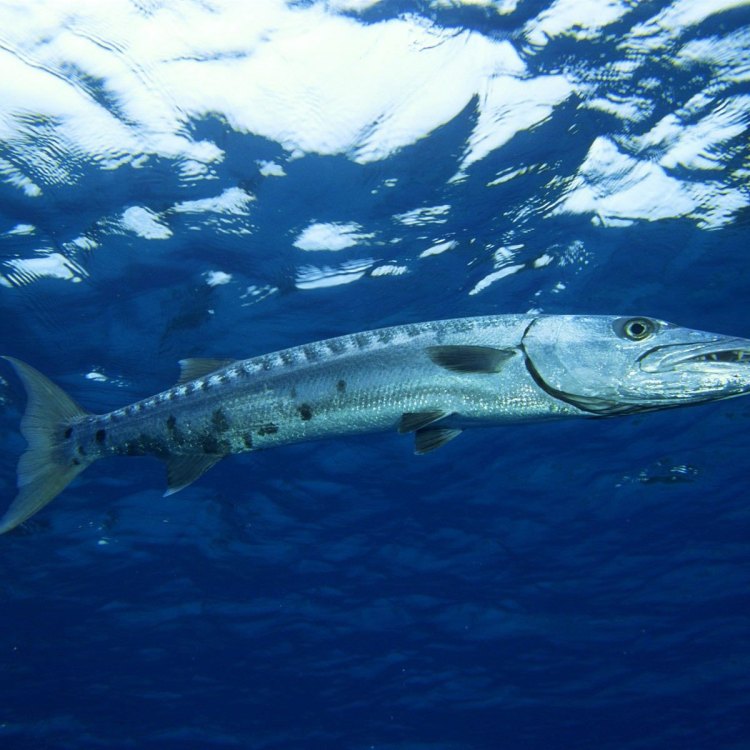
Barracuda
- Adult Size: Varies depending on the species
- Average Lifespan: 10 to 15 years
- Reproduction: Sexual
- Reproductive Behavior: Spawning aggregations
- Sound or Call: Can produce sounds by grinding their teeth
- Migration Pattern: Varies depending on the species
- Social Groups: Solitary or in small groups
- Behavior: Aggressive predators, ambush their prey
- Threats: Overfishing, habitat destruction, pollution
- Conservation Status: Varies depending on the species
- Impact on Ecosystem: Top predators, important for maintaining balance in the food chain
- Human Use: Commercial and sport fishing
- Distinctive Features: Sharp, pointed teeth, powerful jaws, streamlined body
- Interesting Facts: Barracudas are known for their speed and aggressive hunting behavior. They are capable of swimming at high speeds and launching themselves at their prey with incredible force.
- Predator: Sharks, dolphins, larger predatory fish
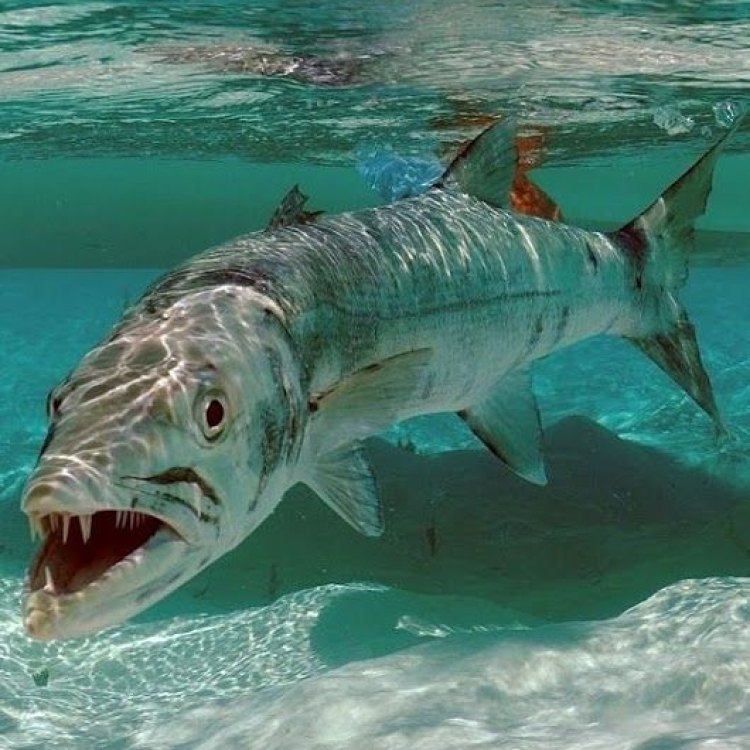
Sphyraena barracuda
The Fierce and Formidable Barracuda: The Ultimate Predator of the Sea
Imagine swimming in the crystal clear waters of the Caribbean, surrounded by vibrant coral reefs and schools of tropical fish. Everything seems peaceful and serene until you come face to face with one of the most feared and powerful predators of the ocean – the barracuda.With its sharp teeth, powerful jaws, and lightning-fast speeds, the barracuda is a force to be reckoned with in the underwater world. In this article, we will dive deeper into the intriguing world of barracudas, uncovering their unique features, behavior, and their crucial role in maintaining the delicate balance of marine ecosystems PeaceOfAnimals.Com.
Anatomy and Habitat
Barracudas belong to the family Sphyraenidae and are found in tropical and subtropical oceans around the world. The exact adult size of barracudas varies depending on the species, but they can grow up to 6 feet in length and weigh over 100 pounds. They have a streamlined, torpedo-shaped body that is designed for speed and agility, making them efficient hunters in the open ocean.One of the most distinctive features of a barracuda is their sharp, pointed teeth that are arranged in an intimidating and jaw-dropping pattern. These teeth are used to tear through their prey with precision and force. Their powerful jaws, along with their speed, make them one of the top predators in the ocean.
Barracudas are known to inhabit shallow coastal waters, coral reefs, and seagrass beds. They are also found in deeper waters, making them adaptable to various environments. They prefer warm waters, but some species of barracudas have been spotted as far north as Canada Boerboel.
Behavior and Reproduction
Barracudas are solitary hunters and are usually seen alone or in small groups, but during the breeding season, they may form large aggregations in specific spawning areas. The reproductive behavior of barracudas is sexual, with males and females coming together to spawn in these aggregations.During the spawning process, the females release thousands of eggs into the water, and the males release sperm to fertilize them. This mass spawning event increases the chances of successful fertilization and the survival of the next generation of barracudas.
Interestingly, barracudas are also known to produce sounds by grinding their teeth, which can be heard by divers and other marine animals. The exact purpose of these sounds is still unknown, but researchers speculate it could be for communication or courtship.
Hunting and Predatory Behavior
Barracudas are fierce and aggressive hunters and are known for their ambush tactics. They have excellent eyesight and are capable of swimming at high speeds, sometimes reaching up to 27 miles per hour. They use this speed to their advantage, often blitz-attacking their prey with incredible force.Their preferred method of hunting is to wait patiently in the shadows, camouflaged by their silvery scales, until an unsuspecting prey swims by. With one swift movement, they launch themselves forward, using their sharp teeth and powerful jaws to take down their target. Their prey of choice includes smaller fish, crustaceans, and even squid.
Despite their strength and hunting prowess, barracudas also have predators of their own. Larger predatory fish, such as groupers and jacks, and even some sharks have been known to prey on barracudas. They also face threats from humans, as they are heavily targeted for commercial and sport fishing.
Impact on Ecosystems and Conservation Status
As top predators, barracudas play a crucial role in maintaining the balance of marine ecosystems. They help to control the population of smaller fish, preventing them from overgrazing on coral reefs and other marine plants. This, in turn, contributes to the overall health of the ecosystem.However, barracudas are facing numerous threats that are putting their populations at risk. Overfishing, habitat destruction, and pollution are the main causes of decline in barracuda numbers. Their slow reproductive rate, with females only reaching sexual maturity between 5-7 years, also makes them vulnerable to overexploitation. As a result, the conservation status of barracudas varies depending on the species, with some facing critically endangered status.
Human Use and Interesting Facts
Aside from being a prized catch for commercial and sport fishing, barracudas have other uses for humans as well. In some cultures, their meat is considered a delicacy, and their skin is used for leather goods. In some areas, they are also used for medicinal purposes, believed to have anti-inflammatory properties.One interesting fact about barracudas is their incredible speed and agility. They are so fast that they can actually leap out of the water in pursuit of their prey, which is a sight to behold for lucky onlookers. They have also been observed to change their coloration and patterns, depending on their surroundings, to better blend in and conceal themselves from potential predators.
Conclusion
In conclusion, barracudas are fascinating creatures that are not to be underestimated in the underwater world. Their impressive physical characteristics and predatory behavior make them a formidable force in the ocean, and their importance in maintaining the balance of marine ecosystems cannot be ignored.However, their populations are facing significant threats, and urgent action is needed to protect and conserve these top predators. By understanding and raising awareness about the unique features and behavior of barracudas, we can hopefully ensure their survival for generations to come. So the next time you take a dip in the ocean, remember to keep an eye out for these fierce and magnificent creatures – the barracudas.

The Fascinating World of the Barracuda
Disclaimer: The content provided is for informational purposes only. We cannot guarantee the accuracy of the information on this page 100%. All information provided here may change without prior notice.


